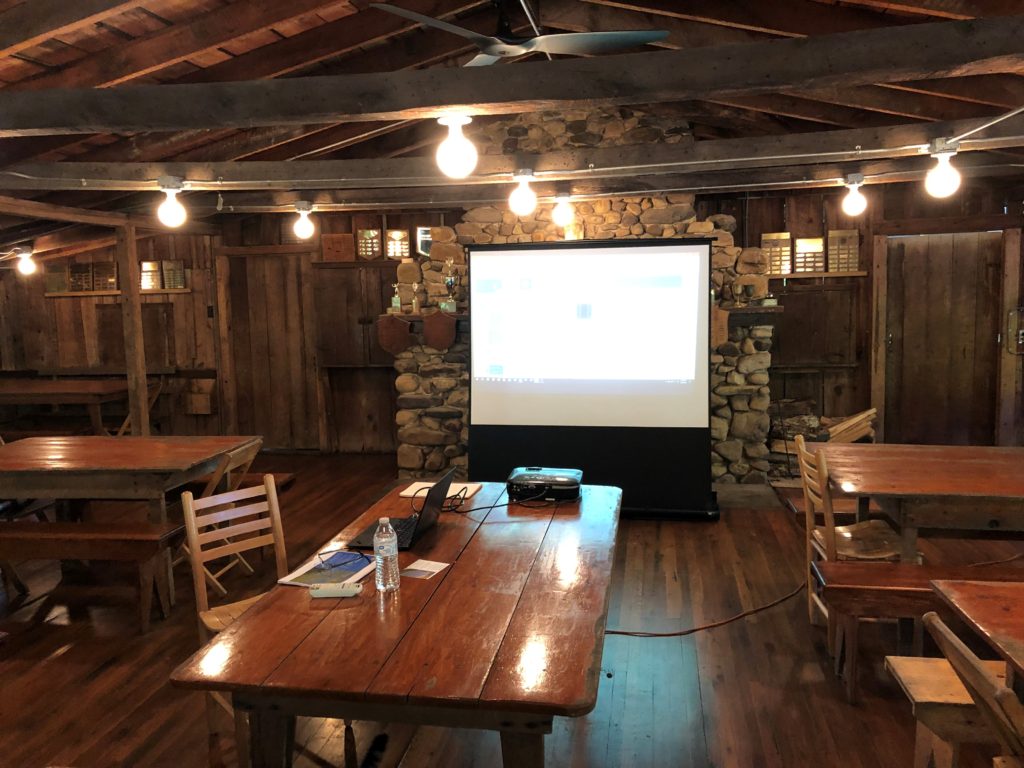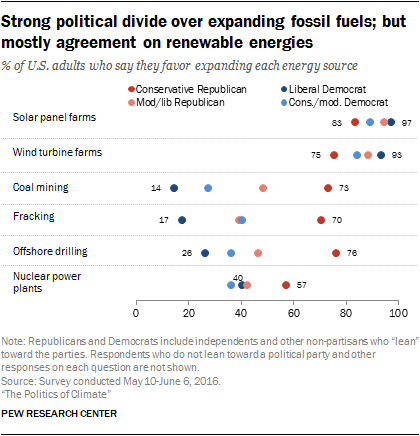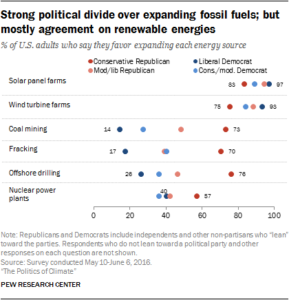Solar Development Manager Stephen Young prepares for a local informational neighborhood meeting. Our communities are important to our business. Their welcome and care drive us to play an active role and create lasting relationships.

Learn more about Holocene’s projects as well as compelling industry updates in the fast-changing clean energy market.
Solar Development Manager Stephen Young prepares for a local informational neighborhood meeting. Our communities are important to our business. Their welcome and care drive us to play an active role and create lasting relationships.

Dear Friends,
Holocene Clean Energy is dedicated to developing innovative solutions that enable power consumers to procure renewable energy at competitive prices, while providing meaningful benefits to local communities hosting our generation facilities.
Recently, we have become aware that one of our efforts to share good news about such benefits may have raised concerns from some community members in the Charlotte Court House, Virginia area.
In the announcement of our financial assistance to the Charlotte Court House Volunteer Fire Department to fund improvements to the area surrounding the new facility, helping trucks pull from the station more quickly during emergencies, we stated that the project was a high priority for the Charlotte County Board of Supervisors. This was incorrect, and in fact, a much more urgent need arose last October involving the Drakes Branch Volunteer Fire Department.
Some time after we offered our support for the improvements at the Charlotte Court House VFD, the facility housing the Drakes Branch Volunteer Fire Department suffered a near total loss during Hurricane Michael and its aftermath. The Holocene team has many friends and family members who are still dealing with the storm’s effects in Virginia and North Carolina, and we understand the importance of communities working together to rebuild from such natural disasters. In reviewing the press release, we understand that it could be construed as minimizing the significance of the Drakes Branch damage, and we sincerely apologize. Anyone with further questions may contact Laura Tillett, laura.tillett@holocene-energy.com, at their convenience.
Our goal in contributing to the enhancement of emergency services in the region is part of our effort to become valued members of the community.
Thank you for your time and consideration.
Sincerely,
Stan Allison
Executive Partner
 What got you interested in renewable energy- what’s your background?
What got you interested in renewable energy- what’s your background?
I first became interested in renewable energy as a senior in high school, when we started studying environmental science. I was startled to realize what burning fossil fuels was doing to our planet, and I wanted to do something to help stem the tide of climate change. It was at UNC that I really began to focus on renewable energy because it had both environmental benefits and made a compelling business case. By the time I left school, North Carolina was in the midst of a solar boom, and I saw my opportunity. I have now spent about four years developing solar projects throughout the southeast and am excited to bring that experience to Holocene.
Why is the work that Holocene is doing important to you both personally and professionally?
Stewardship and environmentalism have been part of my identity since I was a Boy Scout, and I think of this work as a natural extension of those values. We all have a responsibility to the planet and each other, and I think the work Holocene is doing reflects that. Renewable energy development is a unique arrangement that allows for value sharing between many parties. There is a monetary value stream that is shared by landowners, local governments, utilities, developers and investors, but also the environmental value stream that is shared by all people. That is why I love working in solar, because there are so many winners.
What do you like to do in your spare time? Hobbies/passions?
I enjoy running, yoga and hiking with my dog. I love a good book and enjoy cooking creative vegetarian dishes. I can be found at trivia night every Wednesday in Jacksonville, FL, where I live with my girlfriend.
As Holocene engages and streamlines the solar life cycle, we want to recognize the challenges and changes our team and those in our market address. In an industry historically male dominated, we want to celebrate women this International Women’s Day who are working to change the landscape of renewable energy.
Kathy Miller, co-founder and CEO of Yes Solar Solutions, is one of the foremost female entrepreneurs in the North Carolina solar industry. In honor of International Women’s Day, we asked her to give some insight into how the solar industry is changing, and where women fit into the picture.
Holocene Clean Energy: How have you seen the solar industry change over the years, both for women specifically and overall?
Kathy Miller: The solar industry, unfortunately, has not seen as much change for women as we might have expected. When we founded Yes Solar Solutions in 2009, I was the only woman in the building for quite a few years (although we were a pretty small team). We did add a female solar installer who held her own and got NABCEP certified within two years, and our Director of Finance is a woman.
I have noticed more women in renewable energy conferences and on boards over the last few years. The industry is maturing to a degree, which means our workforce is maturing. When we started we were a team of mostly young, white male recent college graduates. Increased diversity has resulted in our company including more people of color, [and] more diverse work experience in trades like roofing, electrician, and construction.
Where everyone in 2009-2013 was young, we have seen our team get married, have children, buy houses and need more work life balance and higher incomes. Providing health insurance used to be relatively inexpensive with just young males, but including spouses and children has increased cost. Our 401K used to be a small piece of our cost, but with a larger group and higher salaries, those costs have risen dramatically. Ultimately, it is up to women leaders in solar to make room for more women in solar.
HCE: What will it take to get women in solar?
KM:
Ultimately, it is up to women leaders in solar to make room for more women in solar.
As our company human resources manager, among other hats I wear, I post jobs, vet resumes, interview and hire. I wish I got more resumes from women, but I do see more women choosing degrees that will ultimately result in more women in solar. And as solar companies grow, there is more room for jobs not requiring specifically solar experience or education: project coordinating, law, marketing, finance, design, administrative (unfortunately often categorized as women’s occupations). Women getting a foot in the door in those roles are learning more about the solar business and advancing, our own Director of Finance, Bethany Theede, being a good example. She started as an administrative assistant, although with a degree in Environmental Studies, and of her own initiative, took on the interconnection process, eventually our accounting, and is now our go-to for job costing, profit and loss statements, and an integral part of our Leadership Team.
HCE: Do you have any bold predictions for the solar industry?
KM: I don’t know how bold my predictions are, since every day there are new developments in renewable energy that are both challenges and blessings. The challenge posed by the tariffs, for example, being announced within a week of Duke Energy’s proposed rebates. Tax credits pumping contracts in and then expiring. But I see opportunity everywhere, from energy storage to products that may make a whole roof solar, to technology we haven’t even seen yet. Yes Solar Solutions is on the energy storage bandwagon, having been the first certified Tesla Powerwall installer in North Carolina and we are installing them as fast as we can get them. Consumers are interested in having some independence from the utilities, and are willing to pay for it. They are also the biggest advocates for renewable energy and that segment gets larger every day. Despite the challenges of the “solar coaster” solar is not going away.
Learn more about Kathy’s journey into solar and her entrepreneurial spirit in Yes Solar Solution’s International Women’s Day Post
Learn more about our team at Holocene Clean Energy.
 Join us in giving a warm welcome to our newest employee, Hunter Heinbach! Hunter is a recent graduate of NC State University with a degree in Electrical Engineering and joined team Holocene Clean Energy in December 2018 to help us with our mission to mainstream clean energy.
Join us in giving a warm welcome to our newest employee, Hunter Heinbach! Hunter is a recent graduate of NC State University with a degree in Electrical Engineering and joined team Holocene Clean Energy in December 2018 to help us with our mission to mainstream clean energy.
What got you interested in renewable energy- what’s your background?
As a young kid I spent most of my time outdoors, whether I was out in my backyard, camping with scouts, or on a road trip with my family. From these experiences I grew to love nature and the great outdoors. My time exploring the outdoors lead to a desire to let others in the future be able to have the same experiences.
My parents put a large emphasis on travel once my siblings and I reached a certain age. Travelling out of the country helped me gain a new perspective and allowed me to refine my goals on how I was going to help future generations maintain the environment. That is when I settled on a track in college towards a renewable energy career and have not looked back since.
Why is the work that Holocene is doing important to you both personally and professionally?
I enjoy not only being able to pursue my life goal to help sustain the environment, but also being part of a smaller and more personable company. I am happy that I have been accepted into a company that puts customer relationships on as high a pedestal as the technical work that happens in the background. I look forward to learning about the industry, both from an engineering and a business perspective.
What do you like to do in your spare time? Hobbies/passions?
My number one passion is tennis. The community in Raleigh is full of other young professionals not only looking for a workout but also to meet new people and extend their social circles. While I am not playing tennis, I enjoy camping, reading sc-fi books, and going to concerts.
A new emphasis on clean energy in many states juxtaposed with upcoming decrease in solar investment tax credit indicate that now is the time to invest in solar energy. In addition, state led decarbonization efforts are intensifying as solar economics are becoming more competitive – putting further pressure and pragmatism behind the shift towards renewable energy. US Energy Information Administration (EIA) expects 4.3GW of utility scale solar to enter service by the end of 2019. PV InfoLink predicts that module sales worldwide will be around 112 GW in 2019, due to China’s increased 2020 targets, and renewed market growth in India and the USA. It adds that 16 countries worldwide will achieve an increase of more than 1 GW in installed capacity next year. Trends predict that 2019 will see increased near-term deployment of renewable resources.
What will drive this growth?
And while it’s fun to predict, Ralph Thompson, CEO of Holocene reminds us that “what we think is going to happen in solar and what we can generally predict, my guess is it is just going to be blown away. The pace of change, the adoption across the country will have a significant impact.” In some ways – things are moving faster than we can even predict.
The idea that solar doesn’t produce in winter is a myth. In fact, there is plenty of sun to make the benefits of clean energy a feasible option throughout the year wherever you live, even through northeastern winters. Germany was surpassed by China just recently as the worldwide leader in solar energy production. Germany gets less sunlight on average than the midwestern US and China has a similar sunlight profile. If we view solar through the lens of an investment, then we would expect it to generate returns throughout the year, despite inevitable seasonal fluctuations.
A major external factor for every solar project at any time of year is the irradiance. This is the amount of sunlight falling on a given surface. Higher irradiance on a solar cell leads to more energy produced, and this varies throughout each day. Quality solar output projections can be made based off past years, using weather data available from a variety of sources. As well, advances in real-time weather data collection techniques will continue to optimize grid operations and result in better responses to production fluctuation. Technological developments in energy storage will continue to exponentially widen opportunity in utility-scale renewables and manage load in winter.
Even on its own, solar can perform well in the winter. Atmospheric temperatures have no impact on the generation of solar energy, rather, the production is exclusively powered by the sunlight that shines on the panel, and the presence of snow around an asset can reflect light and help improve PV performance.
Cold, sunny weather is good for panels themselves– panels work more efficiently at turning sunshine into electricity because there is less resistance in the solar panel, which acts as a semiconductor of the electricity. Heat has a negative effect on the panels, and production decreases because not as many electrons move through the circuitry in the same amount of time. PV semi-conductors offer more resistance in extreme heat, making them less efficient, reducing efficiency by about 10%. With newer technology such as thin-film PVs, this effect can be smaller. (In the summer months, this effect is off-set by the longer days and hours of sunlight for energy production.) Solar is not as effective during dark, winter months. Shorter daylight hours and overcast conditions generally lead to proportionately less energy produced than in the summer months.
Regarding snow, all solar panels are designed to bear a certain amount of weight- undergoing pressure tests to assess durability and quality. Panels are rated (higher ratings mean that they can better withstand the weight of heavy snow). Office of Energy Efficiency and Renewable Energy operates the Sunshot Initiative Funds Regional Test Centers, which test solar performance in widely varying climates. For example, the Vermont testing centers test for impacts such as microcracks (on mounting points of frames) formed by non-uniform snow load to assure the highest quality PV panels for all seasons. Because snow blocks energy production until plowed or melted, effects of snow should be incorporated into any energy estimates. The panels are designed at a tilt where the majority of snow can fall off on its own accord, yet, in regions with heavy snowfall, assumptions for performance reduction ranges from 8-30%.
Many companies do, in fact, choose to integrate solar during the winter months, when their electricity bill is high, and competition in solar is low. Electricity prices are one of the biggest drivers of solar savings, the higher your electricity prices, the more money you will save by going solar.
If you are interested in learning more about your local monthly solar potential, and the differential valuation throughout the seasons, visit PVWatts Calculator (NREL). For example, Holocene’s Raleigh, North Carolina headquarters’ solar radiation potential for July is almost double that of December based on weather trends for the region.
|
Solar is still cost effective in the winter. These darker months are priced into the annual cost, offsetting the variable rates throughout the year. This functions similarly to the way that an investment’s annual return doesn’t guarantee that return every day. Overall, the energy produced on an annual basis far outweighs the seasonal low production in winter climates.
This month, we welcomed Steve Young, our new Development Manager at Holocene Clean Energy. Steve’s experience and passions speak for themselves – we are thrilled to have you on board!
we welcomed Steve Young, our new Development Manager at Holocene Clean Energy. Steve’s experience and passions speak for themselves – we are thrilled to have you on board!
What got you interested in renewable energy?
My career started in project management for an Environmental Engineering firm in South Carolina. They got involved in renewable energy in 2005 and offered me the chance to get in on the ground level. That led to travel across the US and Canada to develop renewable projects and provide engineering and construction services. In 2008, I went to work for NextEra Energy, the largest renewable energy company in North America and the world’s largest utility. I learned best in class processes for development, engineering and construction, and operations of wind and solar plants. In 2010, NextEra provided an opportunity to move to western Canada to help launch their business in that country. We ended up loving it and stayed for 7 years. I really enjoy all aspects of the renewable industry from project inception, through design and construction, operations, and the business/financial side.
Why is the work that Holocene is doing important to you both personally and professionally?
The career move to come to Holocene was a big decision personally and professionally. I wanted to join a company with great leadership, a solid business model, and where I could make an impact within a team. Holocene offers all that and more. We are excited to be relocating to the Raleigh area and being a part of the substantial growth opportunities ahead. I believe Holocene is unique, innovative and smart about their market approach and has a great reputation and relationships. It is a privilege to join the team at this important stage for the company.
What do you like to do in your spare time? Hobbies/passions?
My wife would say moving is somewhat of a hobby as she counts 25 moves in 15 years of marriage (26 if you include Raleigh)! We have three kids age 14, 12, and 10 and enjoy doing life with them. We are passionate about people and focused on how our lives can impact others in our community and around the world. We enjoy skiing, water sports, getting outdoors, travel and spending time with extended family.

The United States military is dependent on resilient, sustainable, adequate sources of energy, and according to The Department of Defense (DoD) Annual Energy Management Report, the DoD continues to move towards renewable energy as one of three major Energy Performance Goals, alongside energy efficiency and petroleum consumption, investing in cost-effective renewable and distributed energy solutions. The DoD’s strategy considers not only the cost-effectiveness of renewable and distributed energy solutions, but also the energy resilience benefits to help achieve mission assurance.
The U.S. military is working to increase their renewable portfolio to 25% by 2025. Fort Hood Army base in Texas produces nearly 50% of its energy from on-base renewables. This allows the base not only to function in the face of a possible attack on the U.S. energy grid but also to save $100 million in the next 30 years. Fort Hood is just the latest example of the military’s growing interest in renewable energy. The Navy met its goal of producing one gigawatt of renewable energy ahead of its 2015 target, due mostly to the largest purchase of renewable energy by a federal entity to date in 2014.
National Security
Renewable energy provides increased national security, in line with the mission of the armed forces. Often safer than fossil fuels, renewables provide less dependence on foreign oil and fit the military’s security and defense needs. This added security is a key motivator in adding renewables into the military’s power systems to support their operations.
Renewable technologies and locally sourced energies are key to fuel diversification goals. The DoD emphasizes diversification of operational energy supplies in combat zones, within DoD machinery, and in domestic facilities. “The Pentagon has a number of renewable energy contracts in the procurement pipeline that locks the military into a low-priced energy from renewable sources and provides strategic diversity across the energy supply chain,” said James Goudreau, retired US Navy Captain and former acting deputy assistant secretary of Navy for Energy. This includes a continued focus on biofuels as an alternative energy source for naval machinery, where testing began on 50/50 blends of conventional and alternatively fueled planes in 2016.
Renewable energy can help mitigate the threats and costs to national security from imported oil. According to the Rand Corporation Research Group, the largest potential link between imported oil and U.S. national security is the potential of a large disruption in global supplies of oil, followed by increases in payments by U.S. consumers due to reductions in supply by oil exporters. These risks are purely economic, yet still pose a threat to the access to reliable fuel sources, as the military consumes over 100 million barrels of oil per year.
Contrary to popular belief, these national security notions are primarily economically driven and much less about terrorist attacks. Terrorist attacks, according to The Rand Corporation, cost so little to perpetrate, that attempting to curtail terrorist financing through measures affecting the oil market will not be effective. The link between national security and oil-export revenues that finance small terrorist groups is minimal. National security threats can be mitigated by continuing to invest in diverse fuel sources and energy independence.
Resiliency
The DoD realizes that an over-reliance on fossil fuels could undermine its resilience during a power grid failure or reduce its fighting capacity if energy supplies are compromised at the time of war. Energy resilience is the ability to prepare for and recover from energy disruptions that impact mission assurance on military installations (DoDI 4170.11). Renewable energy is a tool to increase resiliency and energy efficiency.
The U.S. Army has begun using clean energy projects to target resiliency through microgrids. Projects that were originally set up to curate a clean energy economy are now serving dual purposes as microgrids. Michael F. McGhee, Executive Director of the U.S. Army’s Office of Energy Initiatives, described an energy security project concept for the Joint Forces Training Base (JFTB) in Los Alamitos, California, where a developer would construct, own, operate, and maintain 16 MW of solar power, energy storage, and microgrid components. Conceptually, the Army would benefit from enhanced energy security through the developer’s “islandable” capability to power critical missions for at least 14 days during a grid emergency, according to Energy Manager Today. Clean energy projects are becoming more pivotal than ever in the U.S. Army when it comes to energy resiliency.
When asked what energy resilience means to him, retired Army Colonel and former Chief of US Army Operational Energy Office Paul Roege told Energy Digital,
“Resilience is the ability to survive and thrive under a changing situation that can happen quickly or over a long-term, and be able to recover quickly from an attack, whether it is cyber or physical, or due to changing global climate. And renewable energy is an important piece of the puzzle for military’s energy resilience because it can improve reliability.”
Legislative Compliance
In addition to security and resiliency, legislative requirements in the past decade have compelled the DoD to move towards alternative and renewable energy sources. In compliance with the Energy Independence and Security Act of 2007 and the National Defense Authorization Act of 2010, military installations and facilities in the US are required to be energy efficient and produce or buy 25% of their total facility energy use from renewable sources by 2025.
Energy Independence and Security Act of 2007 aims to move the US towards greater energy independence and security, and increase production of clean, renewable energy fuels. Within the DoD, U.S. Code 2911, The Energy Policy of the Department of Defense, U.S.C. §2911(e) established a goal for DoD to produce or procure not less than 15 percent by fiscal year (FY) 2018, and 25 percent of the total quantity of facility energy it consumes within its facilities by FY 2025 and each fiscal year thereafter from renewable energy sources. DoD’s progress toward the 10 U.S.C. § 2911(e) renewable energy goal in FY 2016 was 12.6 percent (DoD Annual Energy Report). Additionally, The Departments of the Army, Navy, and Air Force have each established service-level goals of 1GW of renewable energy on or near their installations. Beyond legislative requirements, the military energy policy is driven by cost reduction, energy efficiency and resilience; and renewable energy is integral to each aspect.
Return on Investment
Renewable electricity is now cheaper than conventional generation in more than 60 countries, and will be the most inexpensive source of power everywhere by 2020. The DoD has invested in renewable energy on the premise that despite the startup costs and the research investment that it is cost-effective in the long run, with a worthwhile return on investment.
The DoD uses various financial authorities to increase the supply of distributed (on-site) and renewable energy sources on its installations. DoD uses both appropriated funds and non-Governmental financing to pursue renewable energy projects. DoD partners with private entities to enable the development of large-scale renewable energy projects and relies on congressional appropriations to fund cost effective, small-scale distributed generation projects. These projects are funded by third parties through Utility Service Contracts (USCs), Power Purchase Agreements (PPAs), and out grants.
It seems that the energy goals in the military mirror the civilian realities. The work that the military is doing already penetrates the bounds of the armed services through the impact and protection it provides for civilian lives. But, in the arena of renewable energy, the parallel goes further. As the military forges the way towards resiliency and energy independence, US states will follow suit because of the changing global climate and impacts of extreme weather. Additionally, just as NASA’s Apollo program for moon exploration led to huge advances in engineering and computing in the 1960s and 1970s, military investments in alternative energy sources could develop technology with important civilian uses.

Election season can be divisive – in our country, in our cities, and sometimes, even our homes. It seems like every go around, it becomes harder to find common ground. But there is one point on which many people, from all walks of life, agree- we should accelerate the transition away from fossil fuels to clean, renewable energy.
It shouldn’t be particularly surprising that clean energy enjoys such broad support. Solar and wind power projects are helping clean our air, creating thousands of jobs, and helping to mitigate the worst potential impacts of climate change.

Pew Research Center 2016
A Pew Research Center 2016 Survey found that across the political spectrum, large majorities of people support the expansion of solar panel and wind turbine farms. Some 83% of Republicans favor more solar panel farms; so, too, do virtually all Democrats (97%). Similarly, there is widespread agreement across party and ideological groups in favor of expanding wind energy.
Overwhelmingly, people are behind renewable energy because it makes sense in our economy. Over the past decade, the cost of solar power in the United States has declined 86 percent and wind 67 percent, as supply rises to meet a continually high demand. On the job front, there are about 50,000 who work in the coal mining industry in the United States, compared to the 349,000 Americans who work for solar-related businesses.
Renewable energy has been supported historically more by left-leaning voters, as demonstrated by voting patterns and campaign donations. However, rapidly falling cost of solar and wind energy, due to technological gains (among other factors), have allowed renewables to now be cost competitive with traditional fossil fuels. To be clear, the debate over energy sourcing has not concluded altogether, but rather has softened, shifting toward allowing market access, healthy competition and customer choice as to where, how and from whom you purchase your energy.
In order to gain a broad understanding of their attitudes regarding energy issues on the state level, the Conservatives for Clean Energy (CCE) commissioned a statewide survey of 600 North Carolina voters in May 2018 survey. The results showed that support for clean energy continues to grow among North Carolina voters, regardless of political affiliation or ideology, unequivocally confirming the findings of the 2016 Pew survey.
Mark Fleming, the Executive Director of The Conservatives for Clean Energy, spoke to Holocene on these findings, and shared,
“We continue to see strong clean energy supporters developing on the right (often among those who were once ‘skeptics’ of the economic value of clean energy). The dramatic drop in the cost of wind and solar has been a tremendous help in changing “hearts and minds” on the right. In short, clean energy is now cost competitive with fossil fuels and that fact is creating a growing number of conservative clean energy supporters.”
Non-partisan support for renewable energy can be a beacon of hope and a silo of peace for us as individuals, communities, and corporations amidst a season of tension and division. If the arguments for cost competitiveness, climate benefits, and consumer-driven demand are true, then perhaps we will find ourselves in a place where wind and solar truly will produce 50 percent of the world’s electricity by 2050. As our country continues to move towards renewables, will it be our energy source that helps us all to see across the aisle, and unites us as a country?